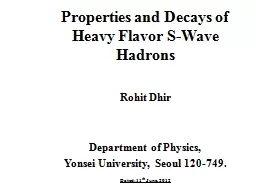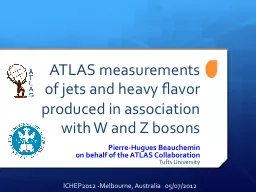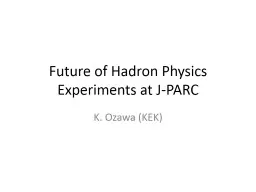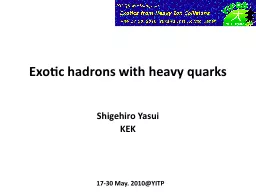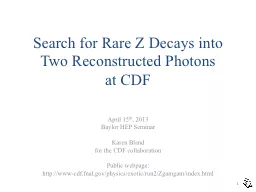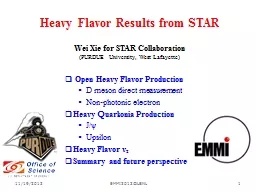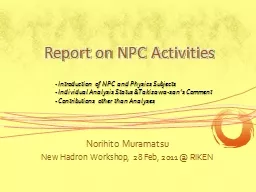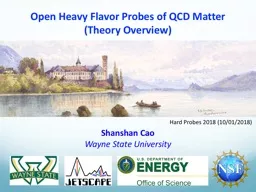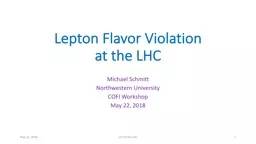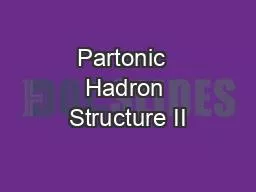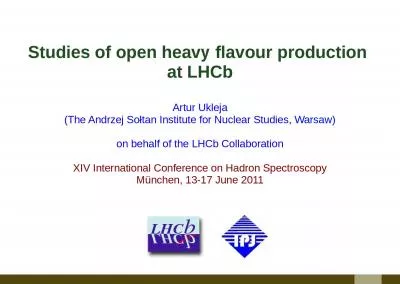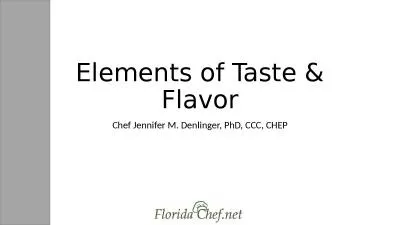PPT-Properties and Decays of Heavy Flavor S-Wave Hadrons
Author : liane-varnes | Published Date : 2016-10-29
Rohit Dhir Department of Physics Yonsei University Seoul 120749 Dated11 th June 2012 Matter amp Forces Matter Leptons Charged Neutrinos Forces Weak EM Strong Gravity
Presentation Embed Code
Download Presentation
Download Presentation The PPT/PDF document "Properties and Decays of Heavy Flavor S-..." is the property of its rightful owner. Permission is granted to download and print the materials on this website for personal, non-commercial use only, and to display it on your personal computer provided you do not modify the materials and that you retain all copyright notices contained in the materials. By downloading content from our website, you accept the terms of this agreement.
Properties and Decays of Heavy Flavor S-Wave Hadrons: Transcript
Download Rules Of Document
"Properties and Decays of Heavy Flavor S-Wave Hadrons"The content belongs to its owner. You may download and print it for personal use, without modification, and keep all copyright notices. By downloading, you agree to these terms.
Related Documents

